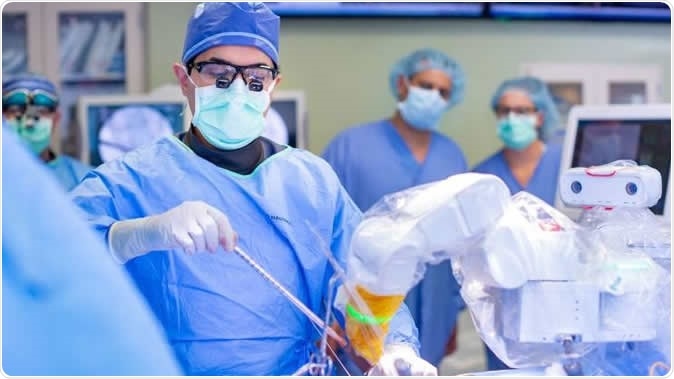
Early research published in Mayo Clinic Proceedings examines the first case at Mayo Clinic of stem cell therapy tested in humans for spinal cord injury. Image Credit: Mayo Clinic
We do not yet understand all of the necessary biology needed to achieve neurological recovery in paralyzed individuals. One of our objectives in this study and future studies is to better delineate who will be a responder and why patients respond differently.”
The team wrote that over 17000 persons in the United States suffer from traumatic spinal cord injury annually and the burden of the injuries affects 291,000 or more annually. These injuries thus form a major socioeconomic burden and cost the health care system over $40 billion including the loss as workforce. Regenerative medicine using stem cells have been one avenue that has been explored in the recent years to seek for answers to paralysis caused due to spinal cord injuries. The team wrote that the, “adipose tissue represents a readily accessible and viable source of MSCs. Available evidence has shown that adipose tissue-derived (AD) MSCs can regulate inflammatory responses and provide a regeneration-permissive environment in animal models of SCI.”
This trial, the team wrote, was planned with 10 patients who were paralyzed as a result of traumatic spinal cord injury (SCI). Mesenchymal stem cell therapy was tried on the patients and one of them showed motor as well as sensory benefits from the therapy and did not show any side effects of adverse reactions. They wrote,” The CELLTOP study, an ongoing multidisciplinary phase 1 clinical trial conducted at Mayo Clinic (ClinicalTrials.gov Identifier: NCT03308565), is investigating the safety and efficacy of intrathecal autologous AD-MSCs in patients with blunt, traumatic SCI.” (AD MSCs - Adipose tissue-derived mesenchymal stem cells).
The patient, a 53-year-old man, Chris Barr, said that he had never hoped to regain motor or sensory functions after his surfing accident. In his recent interview to the media he has said, “The prognosis was — was bad... And bad meaning, you know, probably a 95 to 97 percent chance that I’ll have nothing below my neck.” His injury was labelled as “American Spinal Injury Association Impairment Scale grade A”.
For this procedure where he was the first to sign up, he underwent stem cell therapy which had never been tried before. Stem cells were taken from his own body and in the lab they were coaxed into turning into becoming spine cells. These stem cells were derived from the adipose tissues or fat cells.
Authors wrote that “100 million autologous AD-MSCs” were then injected back into his spinal cord at the level of the lumbar spine. This was done 11 months after the spinal injury Barr suffered. With regular physiotherapy after the treatment, Barr has regained his senses in the lower limbs and can walk on his own feet, explain the researchers. The patients was tested for any side effects at 3, 6, 12 and 18 months after the injection of the stem cells to his spine.
Authors wrote in conclusion, “Thus, in this treated individual with SCI, intrathecal administration of AD-MSCs was feasible and safe and suggested meaningful signs of improved, rather than stabilized, neurologic status warranting further clinical evaluation.”
According to Dr. Bydon, despite the fact that not all may respond similarly, this study sparks hope among hundreds of thousands of individuals who suffer from traumatic spinal cord injuries each year and remain paralyzed for life. Bydon said, “The hope is that we will have novel treatments for spinal cord injuries in the coming years that will be different from what we have today. These will be therapies that do not rely upon supportive care, but therapies that rely on science to create a regenerative process for the spinal cord.”
Journal reference:
CELLTOP Clinical Trial: First Report From a Phase 1 Trial of Autologous Adipose Tissue-Derived Mesenchymal Stem Cells in the Treatment of Paralysis Due to Traumatic Spinal Cord Injury Bydon, Mohamad et al. Mayo Clinic Proceedings, https://www.mayoclinicproceedings.org/article/S0025-6196(19)30871-7/fulltext.






No comments
Post a Comment